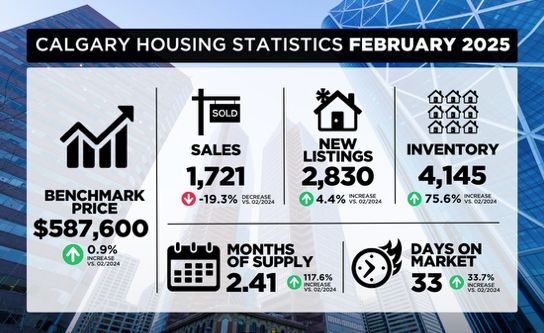Canada’s Largest Real Estate Markets Saw Supply Outpace Population: Stat Can
Chris Alexander, president of Re/Max Canada, talks to the Financial Post’s Larysa Harapyn about how the recreational real estate market has returned to normal levels after the feverish pace of 2020 and 2021, and what to expect from the market across the country this summer.

Canada’s national stats agency is pouring a bucket of ice water on the country’s speculative markets. The Canadian Housing Statistics Program (CHSP) crunched housing supply numbers from 2019 to 2021. The Statistics Canada (Stat Can) program found that both Toronto and Vancouver Census Metropolitan Areas (CMAs) saw its housing supply grow much faster than its population. That means the rapid escalation of home prices was due to overly loose credit and narrative. Whoops!
Toronto & Vancouver Have Seen Housing Outpace Population
Toronto, Canada’s largest city, has more than kept up with housing supply, it’s an allocation issue. Stat Can found that Toronto CMA saw its population rise 1.3% (+84,480 people) between 2019 and 2021. At the same time, its housing stock increased 3.5% (+61,320 properties).
The numbers work out to roughly 1 home for every 1.3 people—half the city’s average household size. Unless a single-person pod was built right across Toronto and its surrounding regions, that implies housing wasn’t nearly as scarce as it seems.
Vancouver, Canada’s most expensive city and a traditional immigration hub, is a little tighter. Still, Stat Can points out that Vancouver CMA’s housing stock rose 3.6% (+28,085 homes) from 2019 to 2021, with its population climbing just 2.1% (+55,655 people) over the same period. That’s 2 people per home, about 26% lower than the average household size in the region.
Canadian Real Estate Prices Have Been Driven By Credit & Narrative
Sure, but that’s just a few years. Canada has had a chronic shortage of supply, right? That’s not what the data has shown. BMO argues the country’s housing supply outpaced household formation for two decades. There may not be a ton of extra housing, but Canada’s 30-plus-years of exuberant price growth isn’t based on a shortage. A perceived shortage tends to get manufactured when home prices are rising the sharpest, with supply throttled, since who the heck sells a rapidly appreciating asset?
During this period, where the supply outpaced population, these markets saw nearly record price growth. The narrative was a shortage of supply, but the reality was due to cheap credit flooding the market. That’s not just our opinion we’re hoping to debate, but one taken by the international monetary system.
The Bank of International Settlements (BIS), a central bank for central banks, found that home prices across the world surged due to rates being too low for too long.
That likely won’t surprise the Bank of Canada (BoC). No, not because the BoC governor was also the head of the BIS Governors’ Council at the time. The central bank’s own research found that low rates boosted home prices for 30 years, and actually made housing less affordable despite the narrative. Hilarious, right?
Canada Didn’t Have A Supply Shortage, But Its Gov Wants One
A few of Canada’s Big Six banks haven’t been convinced of the shortage, but they see one brewing. BMO argues Canada didn’t have a shortage of supply, but the Federal Government is trying to manufacture one. It’s using aggressive population growth as a demand stimulus, helping to bolster its coffers.
By intentionally growing the population faster than it can produce adequate housing, they’re attempting to establish a price floor for what global banks are calling “the world’s largest real estate bubble.
Scotiabank has also chimed in, stating that interest rates need to surge higher to stabilize housing. While housing isn’t a primary objective of the BoC, the only way to offset instability caused by the Federal government’s population-demand strategy is by throttling credit. In their opinion, the decline in home prices would be a smaller risk than home prices continuing their current trajectory.
Categories
Recent Posts











